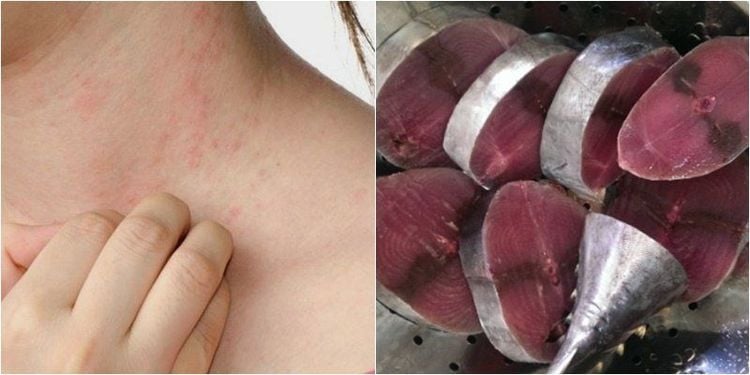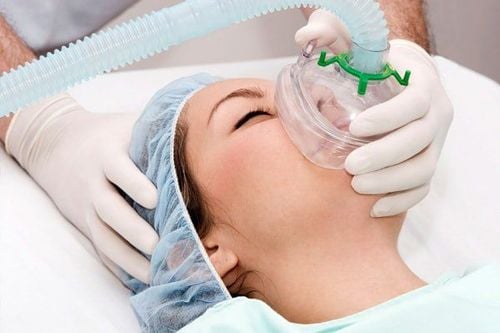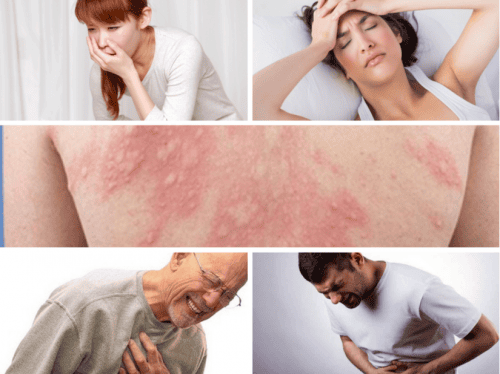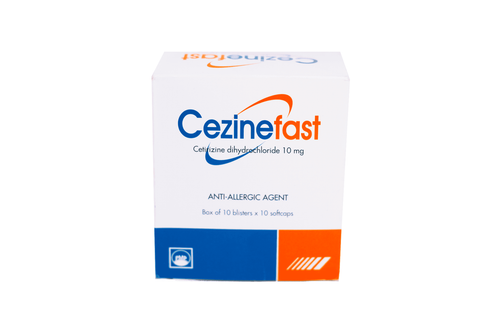This is an automatically translated article.
The article is professionally consulted by Master, Doctor Nguyen Thi My - Department of Medical Examination & Internal Medicine - Vinmec Danang International Hospital.Anaphylaxis is a dangerous type of allergic reaction, which can be life-threatening if not treated and treated early and properly. Anaphylaxis can occur within seconds or minutes of exposure to an allergen.
1. Many deaths from anaphylaxis
At the end of April 2018, a patient died from anaphylaxis right after eating seafood despite being taken to the emergency room at the hospital. Most recently, a female patient in Dong Nai province was transferred to Cho Ray Hospital (HCMC) for emergency due to anaphylaxis after eating tuna.7/5/2019 also recorded a 23-year-old female patient, who had just given birth 1 month ago, died after about 10 hours of treatment. The cause was that the patient had anaphylaxis after injecting contrast material for tomography.
In fact, there are many other cases of patients dying from anaphylaxis, the cause is not being treated in time, when taken to the hospital it is too late, even though they actively receive emergency treatment, they cannot survive. .

2. How dangerous is anaphylaxis?
Anaphylaxis is a severe allergic reaction that can be life-threatening within seconds or minutes of exposure to an allergen. Anaphylaxis is always a complication that causes confusion not only for patients and their family members but also for doctors.Anaphylaxis appears quickly, immediately, some cases appear after 30 minutes of taking the drug, try testing... If the symptoms of anaphylaxis appear as soon as possible, the more severe the disease, the higher the mortality rate. .
Therefore, it is necessary to understand the cause, especially the specific allergen, to give quick, timely and accurate first aid to the patient.
The course of anaphylaxis is divided into 3 levels: mild, moderate and severe.
Mild course of anaphylaxis With manifestations of anxiety, headache, fear, dizziness. There are cases of urticaria, rash, nausea, or vomiting, Quincke's edema, cough, finger numbness, difficulty breathing, abdominal cramps, fatigue, and urinary incontinence.
Listen to the lungs with rales, rales like bronchial asthma, the heart beat is not clear.
Low blood pressure, tachycardia (130-150 beats/min), sometimes extrasystole.
Moderate course of anaphylaxis With manifestations of panic, dizziness, fear of death, tingling, hives all over, difficulty breathing, sometimes coma, convulsions, nosebleeds, bleeding in the stomach and intestines .
Examination revealed that the patient's skin was pale, the lips were dark, the mucous membranes were purple, and the pupils were dilated.
Weak heart beat, small fast pulse difficult to catch, blood pressure can't be measured.
Severe course of anaphylaxis Anaphylaxis occurs in the first minutes with a lightning speed, causing the patient to go into coma, pale skin, suffocation, convulsions, unmeasurable blood pressure and death after few minutes, finite lasting several hours.

Hypovolemic shock in anaphylaxis is vasodilation, blood loss into the extravascular compartments, and decreased myocardial contractility. Therefore, first aid for hypovolemic shock is the key element in anaphylaxis.
In many cases, anaphylaxis develops at a moderate rate. Patients have reactions such as burning and itching all over, fatigue, ringing in the ears, itchy nose, red eyes, dry cough, watery eyes, shortness of breath, abdominal cramps, etc.
Examination can detect : Congestion of the skin, edema of eyelids and ears, rash, urticaria, allergic conjunctivitis, crackles, rales throughout the lungs, rhinitis, tachycardia, small heartbeat, low blood pressure. Then there are manifestations: blurred consciousness or coma, pupils not responding to light.
Notably, late complications occur after anaphylaxis such as glomerulonephritis, allergic myocarditis, nephritis. These complications can lead to death.
There are cases of anaphylaxis that have been treated, but 1-2 weeks later bronchial asthma, Quincke's edema, recurrent urticaria and sometimes colloidal diseases such as systemic lupus erythematosus, periarteritis nodosa...
3. Patients with anaphylaxis must be treated as soon as possible

If you see someone having an allergic reaction and have signs signs of anaphylaxis, Even if you are not sure that your symptoms are due to anaphylaxis:
Call 911 or your local emergency number or get any medical help. Place the casualty in a comfortable lying position and raise the victim's legs. Check the victim's pulse and breathing. If possible, perform cardiopulmonary resuscitation (CPR) and other first aid measures. Give the victim an anaphylactic injection such as an epinephrine auto-injector or an antihistamine if the victim has one. Anaphylaxis is extremely dangerous, so people at high risk of anaphylaxis should carry an auto-injector with them. This device is a syringe combined with a hidden needle, which only injects a single dose of medicine when it is pressed into the thigh, which will help reduce or slow down anaphylaxis reactions, increase the patient's survival.
Master. American doctor has more than 6 years of experience as an internal medicine doctor at Hue Central Hospital, Hue University of Medicine and Pharmacy Hospital; Tam Tri Da Nang Hospital; Danang Hospital. Currently, he is a General Internal Medicine Doctor at Vinmec Da Nang International General Hospital.
Please dial HOTLINE for more information or register for an appointment HERE. Download MyVinmec app to make appointments faster and to manage your bookings easily.














